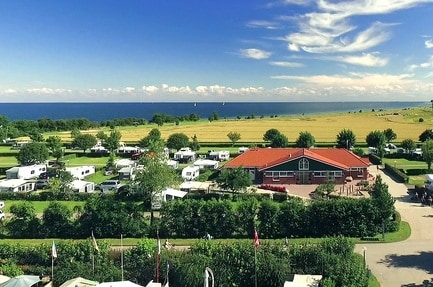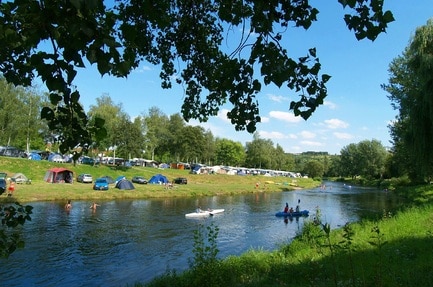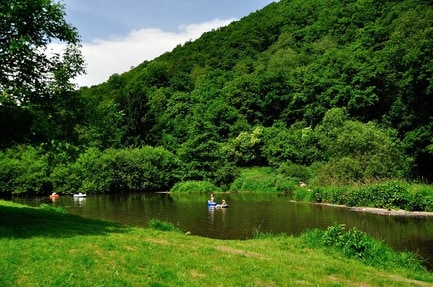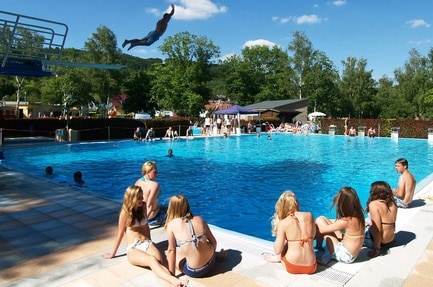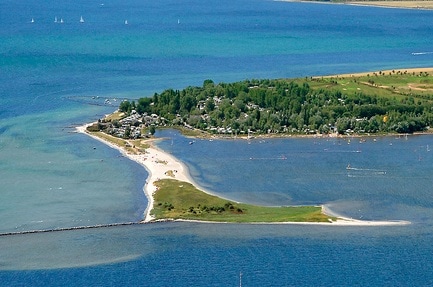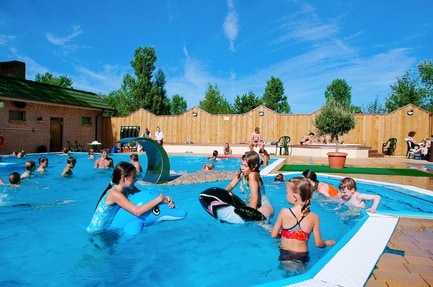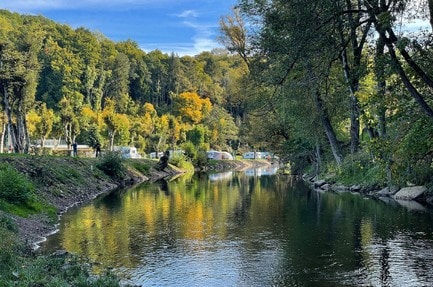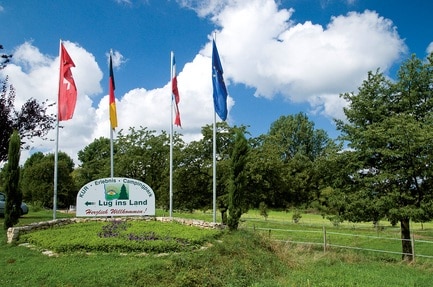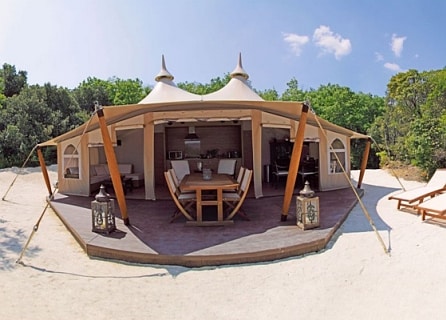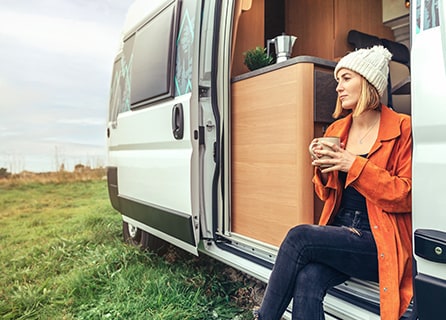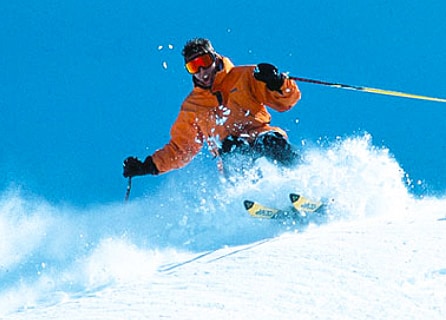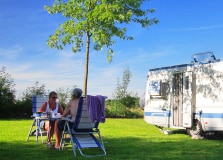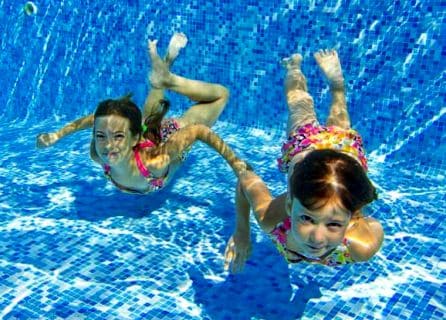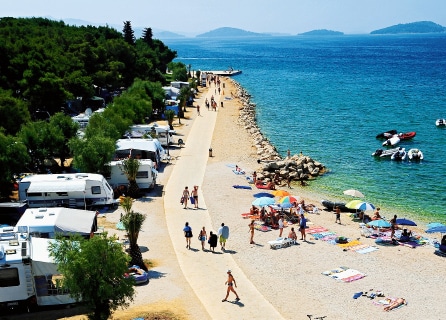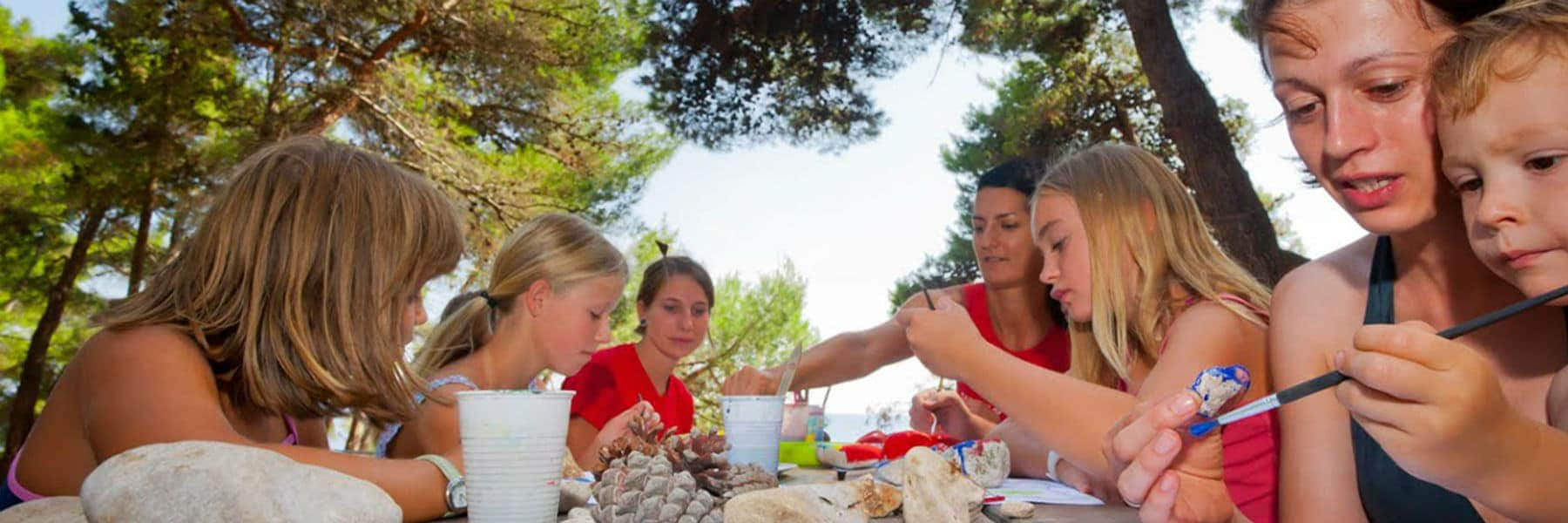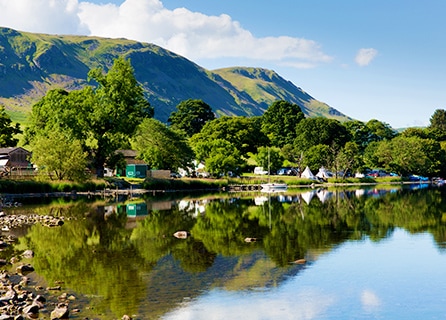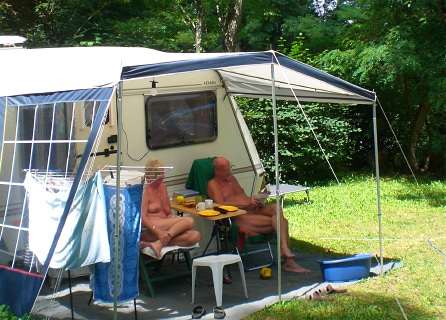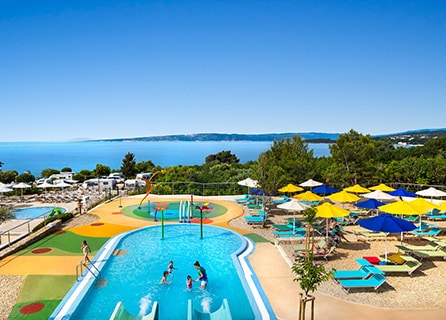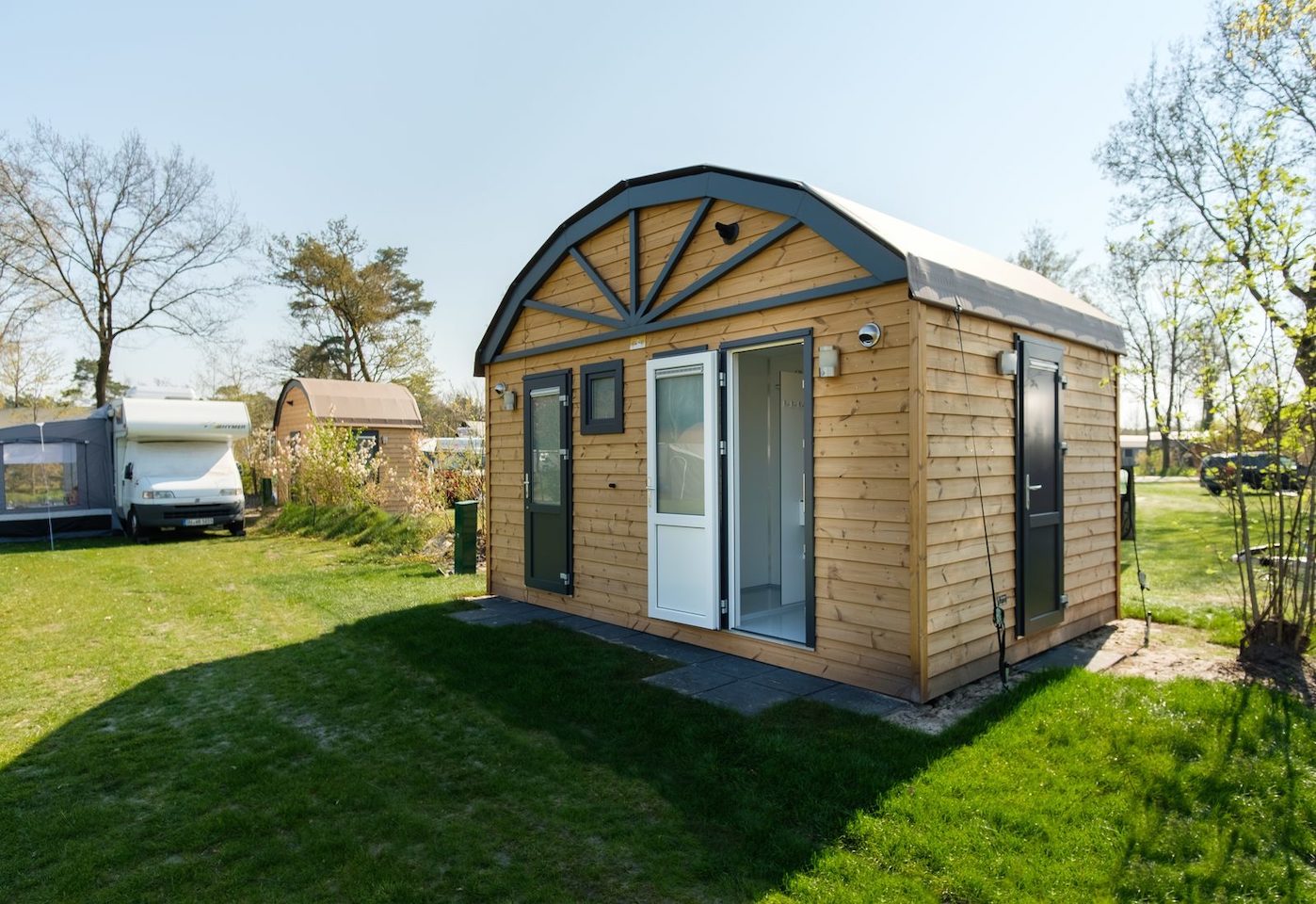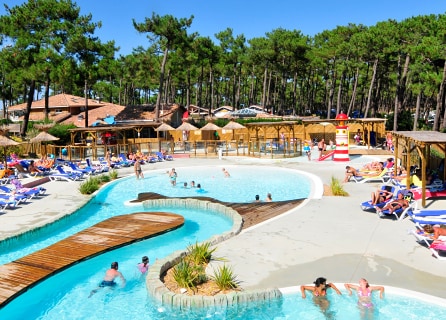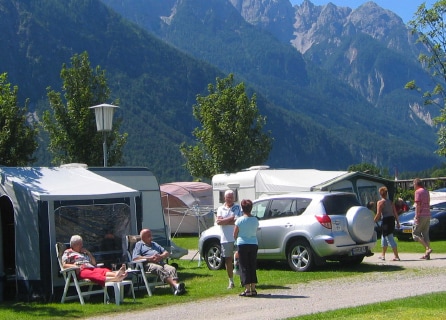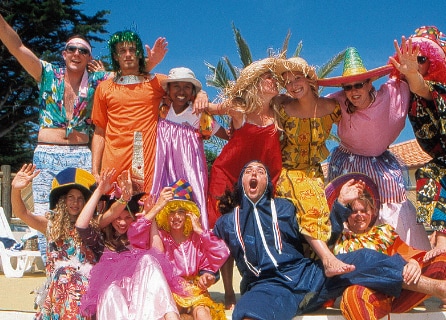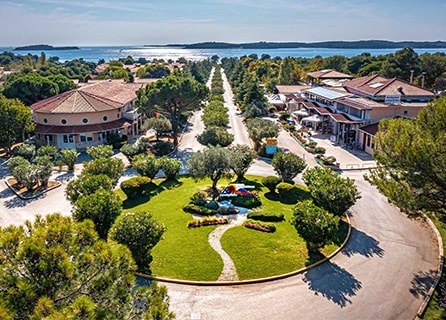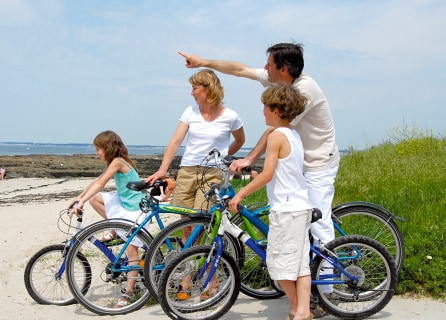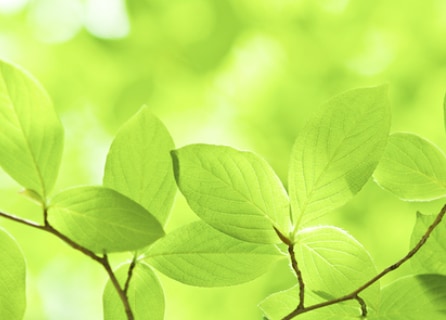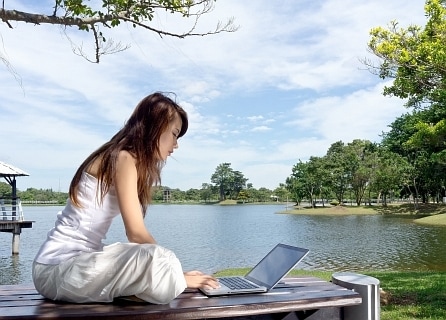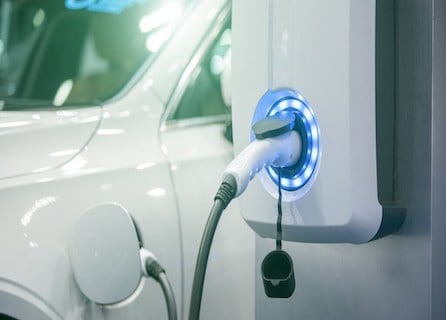Camping in Germany: mountains, forests and inviting cities
That you can enjoy a wonderful camping holiday full of variety in Germany goes without saying. The countryside is very contrasting, from the North German lowlands and the East Friesian Wadden Sea islands to the Alps in the south. Sightseeing can be just as varied and ranges from fairytale castles and historic towns to famous rivers and lakes. And then there are the metropolis cities such as Hamburg and Munich… Germany has it all!
On holiday in Germany – another world
The Lüneburg Heath, the largest continuous heathland in Europe is located in northern Germany. It is a popular destination for a motoring holiday Germany. The small town of Celle is right on the edge and has a well preserved centre full of half timbered merchants’ houses and a huge castle surrounded by a moat. Other places for an interesting day trip from your camp site in northern Germany are the Hanseatic towns of Lübeck, Bremen and Hamburg.
Discover the Baltic Sea coast, islands and lakes of northern Germany
Northern Germany is an excellent choice for lovers of nature and culture. If you’re a keen cyclist, we recommend the Baltic Sea Cycle Route. This cycle path runs along the German Baltic Sea coast from Flensburg to the island of Usedom. Along the way, you’ll pass lovely cities such as Lübeck and Rostock, and extensive beaches with their typical wicker beach chairs. On the scenic islands such as Zingst and Rügen, you’ll find attractive campsites in the middle of unique landscapes. If you love water sports, peace and quiet, or birds, the East German lakes of the Mecklenburgische Seenplatte (Mecklenburg Lake District) region are highly recommended. In a water-rich area of more than 100 lakes, you might be lucky and spot white-tailed eagles or ospreys. And in spring, countless cranes come here to breed.
Camping by the River Moselle
Go on a voyage of discovery in the Moselle Valley. It’s a delightful area for a camping holiday. You’ll have a fabulous view of the meandering river and the green vineyards covering the steep slopes. Along the way, you can explore lovely places such as Koblenz, Cochem and Trier. Stop off along the way at a beautiful castle, then finish the day with a wine-tasting. Because all over the Moselle Valley, you’ll find wineries that are proud of their harvest. Would you rather leave your caravan or tent in just one place? The Moselle Valley is also ideal as a base. Most campsites in the Moselle Valley are right by the river. Great for some quiet fishing or a refreshing swim in summer.
Camping in the Eiffel
The Eiffel is located further to the south, a wooded area full of lakes formed by craters and trickling mountain streams, also known as Little Switzerland. This make the Eiffel perfect for those who like long walks and the countryside. And when you are staying at a camp site in the Eiffel be sure to visit beautiful Trier, Germany’s oldest town! From your Eiffel camp site you can follow the Mosel upstream and visit the wine growing areas to sample a glass in the wine centres of Rüdesheim, Eberbach or Bernkastel.
Camping in the Black Forest
Another famous destination for motoring holidays in Germany is the Black Forest (Schwarzwald). There are wonderful views here of valleys, mountain streams and waterfalls carved out by the glaciers, and no fewer than 7000 km of marked footpaths. So there are plenty of camp sites to suit hikers in the Black Forest! Baden Baden as its name suggests is one of the principal spa resorts in the area and is a popular day out for many people who go camping in the Black Forest.
Camping in Bavaria
Bavaria borders onto the Czech Republic and Austria. A huge area with old traditions, friendly locals and undulating scenery filled with forests of conifers and interesting little towns, which has plenty on offer for a wonderful motoring holiday. If you want to go out for a day in Bavaria you are spoilt for choice. To Munich for example for the traditional Oktoberfeste where everything revolves around the theme of Beer and Bratwurst (German sausage!), or to the chique BMW museum. Würzburg is noted for its picturesque centre full of Baroque and Rococo influences and of course for its famous castle high up overlooking the river.
From cathedrals to fine dining
In Germany, it’s easy to combine your camping holiday with a city trip. You’ll find a number of ACSI campsites near beautiful and lively cities such as Berlin, Dresden and Munich. Marvel at the history of centuries-old cathedrals and castles, and enjoy German hospitality with delicious food and drink.
